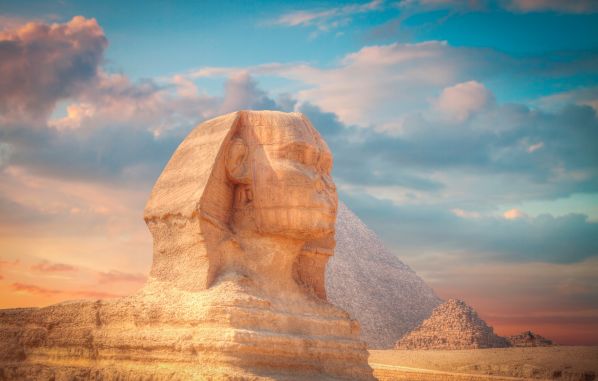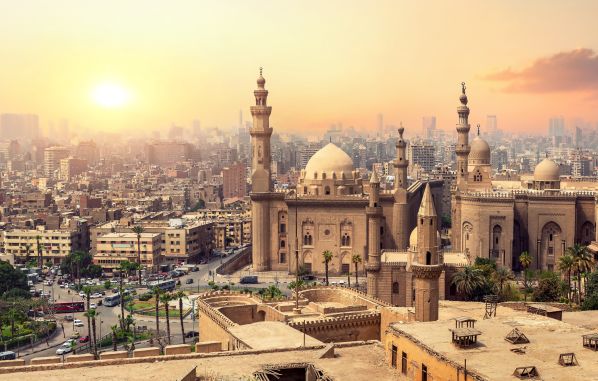Special 7 wonders of the world: Taj Mahal, a monument to love

The Taj Mahal is an architectural poem written in white marble , or, evoking its legend, a love letter transformed into a majestic monument , located in the city of Agra , India , which more than a wonder of the world, is an eternal testament to romance and devotion .
This mausoleum was built in the 17th century by the Mughal emperor Shah Jahan in memory of his favorite wife, Mumtaz Mahal . This marvel of Mughal architecture is located on the banks of the Yamuna River in Agra , a city in the state of Uttar Pradesh, India .
Its main structure is made of white marble , decorated with intricate details of precious stone inlays, which give it a shine that changes with the light of day .
Why it's a love story
The story of the Taj Mahal is a story of eternal love . Mumtaz Mahal , Shah Jahan 's wife, died in 1631 while giving birth to their fourteenth child. Her death devastated the emperor, who vowed to build a monument that would reflect the beauty and purity of their love.
The construction of the Taj Mahal began in 1632 and lasted more than 20 years , employing more than 20,000 artisans and workers from various parts of Asia .

The design of the Taj Mahal is a combination of Islamic , Persian , Ottoman , and Indian architectural styles. The mausoleum is surrounded by a complex that includes symmetrical gardens , a mosque , and a guesthouse . Every detail was carefully planned to create a space that embodies serenity and grandeur .
In 2007 , the Taj Mahal was declared one of the New Seven Wonders of the Modern World in a global vote organized by the New7Wonders Foundation. Its selection was based on its unparalleled beauty , its symbolism as a monument to love , and its historical and cultural significance. This recognition solidified its position as an unmissable tourist destination , attracting millions of visitors annually.

What to do and see at the Taj Mahal?
If you're planning a visit to the Taj Mahal , be sure to book your tickets in advance and opt for a tour guide to help you understand the intricate details of its design and history. The best time to visit is between October and March , when the weather is most pleasant.
Exploring the Taj Mahal is a magical experience with many facets to discover. One of the first recommended activities is strolling through its gardens , a landscape design that represents earthly paradise . These gardens are divided into four sections by waterways that reflect the mausoleum , creating perfect visual harmony .

Another highlight is the opportunity to admire the architectural details of the main mausoleum . From its intricate geometric patterns to the Quranic inscriptions in black marble , every corner showcases the meticulous craftsmanship that brought this architectural gem to life. Furthermore, the building's impeccable symmetry is complemented by the deliberate asymmetry of Shah Jahan 's tomb, adding a touch of humanity to the design's perfection.

In addition to exploring the mausoleum , don't miss the mosque and guesthouse located on either side of the main building. These structures not only complement the overall design but also offer spectacular views and spaces to reflect on the history and significance of the site.

Five interesting facts about the Taj Mahal
- Color changes : The white marble of the Taj Mahal changes hue depending on the daylight . At dawn , it takes on a pinkish or orange tone, while at midday it shines pure white , and under moonlight it turns silvery .
- Perfect symmetry : Although the entire complex is perfectly symmetrical , Shah Jahan's tomb is the only element that breaks this symmetry , as it was added after his death.
- The artisans' hands : It is said that Shah Jahan ordered the hands of the master artisans to be amputated so that they could never replicate the work elsewhere. Although this is probably a myth , it shows his obsessive dedication to the project.
- Precious jewels : Originally, the Taj Mahal was decorated with precious stones such as sapphires , jade , and turquoise , many of which were looted during the colonial period .
- Environmental threats : The Taj Mahal faces conservation challenges due to pollution and the effects of mass tourism . Authorities have implemented strict measures to protect it.

Shah Jahan 's passion for Mumtaz Mahal is immortalized in every stone , every garden , and every arch . It is a reminder that love can inspire the most sublime creations, a legacy of love that draws couples, families, and solo travelers from all over the world, who find in the Taj Mahal not only a work of art , but also a source of inspiration and emotional connection .
You might also be interested in: 5 tips for hot air ballooning in Cappadocia




















